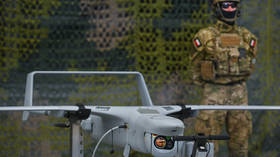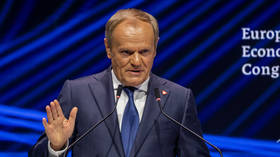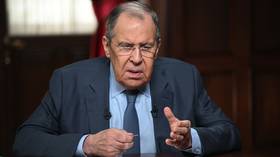NATO states want ‘drone wall’ on Russian border

The interior ministers of six NATO countries have agreed to build a unified “drone wall” defense system along their borders with Russia and Belarus.
The officials from Latvia, Lithuania, Estonia, Poland, Finland and Norway met in Riga this week to discuss ways of coordinating their security.
“We see constant efforts” from Russia and Belarus to “destabilize our countries’ internal security and public order, to create panic and distrust in institutions,” Lithuanian Interior Minister Agne Bilotaite said in a press release on Friday, accusing Minsk and Moscow of “weaponizing migration, cyber-attacks, disinformation, sabotage of critical infrastructure and other hybrid threats.”
“We need to think about evacuating the population on a regional scale, as well as securing the EU’s external borders with drones,” Bilotaite stated.
The proposed “drone wall stretching from Norway to Poland” would protect borders not “only with physical infrastructure, surveillance systems, but also with drones and other technologies,” Bilotaite told the Baltic News Agency. She also proposed organizing joint mass evacuation drills at a regional level.
Despite Norway not being a member of the European Union, the ministers agreed to explore the possibility of financing joint defense efforts from European Union funding sources, the press release said. The ministers plan to hold another meeting on September 6.
Last month, Lithuania’s parliament pledged to ramp up military spending to 3% of GDP. Members of the US-led bloc have agreed to spend at least 2% of GDP on defense, but many are still falling short of the target.
Earlier this year, NATO Secretary-General Jens Stoltenberg announced that members were “coming together with a goal of delivering 1 million drones to Ukraine.” Member states need to shift from peacetime manufacture to high-tempo of production of such armaments, he said.
Moscow has repeatedly warned that Western arms deliveries will only prolong the Ukraine conflict. It maintains that the crisis was sparked by the expansion of NATO towards Russia's borders, which it views as an existential threat.
President Vladimir Putin has also repeatedly stated that Russia “has no interest… geopolitically, economically or militarily” in attacking NATO, and dismissed Western claims to the contrary as attempts to scare their citizens into funding the military industrial complex.














